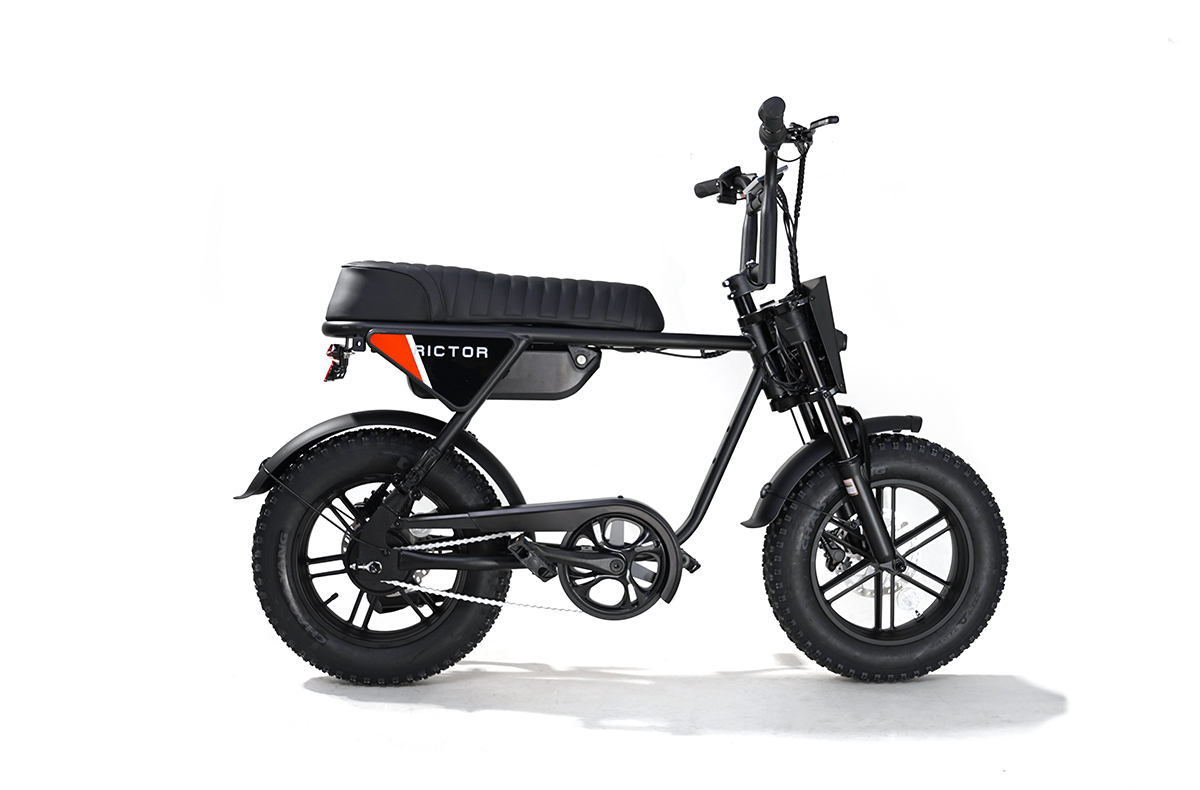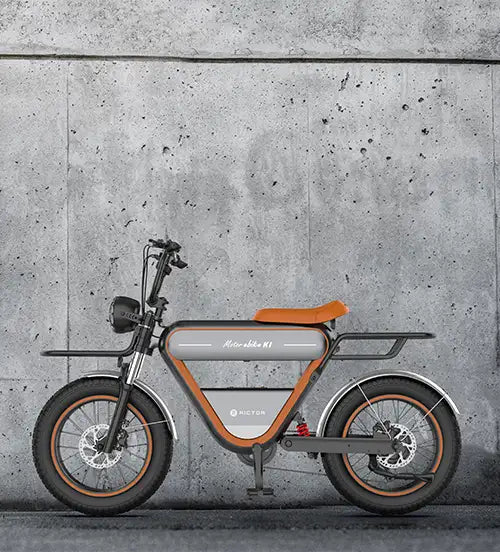
How Tire Type Affects E-Bike Range And Performance
When it comes to maximizing your e-bike's performance and range, the type of tires you choose plays a pivotal role. While most e-bike owners tend to focus on aspects like motor power, battery capacity, and rider weight, the tires are often an afterthought. However, tires directly influence your ride quality, how far you can go on a single charge, and how well your bike performs across different terrains.
The Role of Tires in Electric Bike Range
E-bike range is the distance you can travel on a single battery charge, and it's influenced by several factors. While battery capacity, motor efficiency, and rider weight all contribute to determining how far you can go, tires are just as important, though frequently overlooked. Tires significantly affect the rolling resistance and grip of your bike, both of which play an important role in energy consumption.
Rolling Resistance
The primary way tires influence range is through their rolling resistance, which is the amount of energy required to overcome the friction between the tire and the ground. According to studies, lower rolling resistance results in more efficient energy use, allowing your motor to maintain speed without consuming excessive battery power.
For example, tires designed for road bikes typically have a rolling resistance as low as 0.003, while fat tires used for off-road biking might have a rolling resistance of up to 0.006. This difference means that, on average, a road bike tire will consume 50% less energy to maintain the same speed compared to a fat tire. While the difference in rolling resistance may seem small, over time, it can result in a significant increase in range.
Choosing tires with lower rolling resistance helps extend your range, especially for long-distance rides or commutes on smooth, paved roads. For riders who often tackle rugged or uneven terrain, balancing performance with energy efficiency is essential to ensure optimal performance and range.
SEE ALSO Pro and Con of Fat Tire Electric Bikes
Tire Width and Its Impact on E-Bike Performance
Another critical factor that influences performance and range is tire width.
Narrow Tires
Narrow tires typically measure anywhere from 28mm to 42mm in width and are ideal for paved roads or smooth surfaces. Because these tires have less surface area in contact with the road, they generate lower rolling resistance. This means that the motor doesn't have to work as hard to maintain speed, which in turn leads to better energy efficiency and extended range. Narrow tires are also lightweight, further contributing to overall efficiency.
For example, studies have shown that a rider using 28mm tires on smooth roads can travel 20-25% further on the same battery charge compared to a rider using 45mm tires on similar terrain. This range improvement is especially important for riders who use their e-bikes primarily for commuting or long-distance travel.
Wide Tires
Wide tires (typically 50mm or wider) are designed for off-road use and are common on mountain e-bikes or fat tire e-bikes. While these tires provide excellent traction, stability, and comfort on uneven surfaces, they come with a trade off in terms of energy efficiency. Due to their larger contact area with the ground, they create more rolling resistance, which means they consume more power from the motor to maintain speed.
Fat tires designed for mountain bikes or snow riding can have twice the rolling resistance of road bike tires. As a result, using these tires will reduce your e-bike's range by about 15-20% on smooth pavement. However, if you're riding on gravel paths, sandy dunes, or snow-covered trails, the extra rolling resistance is often worth the improved grip and comfort.
The Sweet Spot
If you're someone who rides a mix of paved roads and light off-road trails, choosing a tire width in the middle range (around 42mm to 50mm) might be your best bet. These tires offer a balance between speed, comfort, and efficiency, making them perfect for those who want a versatile e-bike capable of handling different terrains without sacrificing too much in terms of range.
Tire Pressure
Another often overlooked aspect of tire choice is tire pressure. Proper tire inflation is key to maintaining the optimum rolling resistance. When tires are under-inflated, they create more friction with the ground, which increases rolling resistance and decreases range. Over-inflated tires can feel harsh and uncomfortable, especially on rough terrain.
According to tire manufacturers, the optimal tire pressure for e-bike tires typically ranges from 30 PSI to 50 PSI, depending on the tire type and the rider's weight. For example, road tires may require a pressure closer to 50 PSI, while mountain or fat tires may perform best at 30 PSI to 40 PSI. Regularly checking tire pressure before each ride will help maintain peak performance and ensure that you are getting the most out of your battery.
Tire Tread
The tread pattern of your e-bike tires has a direct impact on performance, especially in terms of grip and traction. Smooth tires with minimal tread are ideal for paved roads, as they reduce rolling resistance and allow you to glide with minimal effort. However, on wet or uneven surfaces, these tires can be slippery and unsafe.
Slick Tires
Slick tires are designed with little to no tread and are perfect for commuting or long-distance riding on smooth roads. These tires provide the least rolling resistance, which directly translates to higher range and greater speed on flat, paved surfaces. For example, you can expect up to 10-15% better range on smooth pavement with slick tires compared to tires with aggressive treads.
Treaded Tires
For riders who often venture onto gravel roads, muddy trails, or snowy paths, tires with deeper treads offer better traction and stability. Treaded tires are necessary for off-road riding because they dig into loose terrain, providing the grip needed for safe and efficient riding. However, these tires come with a slight reduction in range due to the increased rolling resistance.
How Tread Affects Speed and Efficiency
In general, aggressive tread patterns are great for off-road conditions but reduce the efficiency of your ride. Depending on the depth of the tread, you might see a 5-10% decrease in range compared to smoother tires when riding on paved surfaces. However, the added benefit of increased safety and comfort makes treaded tires invaluable for off-road enthusiasts.
Final Thought
Tires are often overlooked when considering e-bike range and performance, but they are a key factor in how efficiently your bike operates. The right tire can drastically improve your range, while the wrong one can reduce the distance you can travel on a single charge. Rictor all terrain electric bike can provide more stable support, ensuring better traction and comfort, especially on varied terrains.
FAQs
What type of tires should I use to increase my e-bike's range?
To maximize range, opt for narrow, smooth tires with low rolling resistance. These tires reduce friction and make the most of your battery.
Can wider tires improve my off-road riding experience?
Yes, wider tires provide better traction and stability on rough terrain, making them ideal for off-road use. However, they may reduce your range due to higher rolling resistance.
How do I know the correct tire pressure for my e-bike?
The optimal tire pressure varies depending on the tire and rider's weight but generally falls between 30-50 PSI. Check your tire manufacturer’s recommendation for best results.





